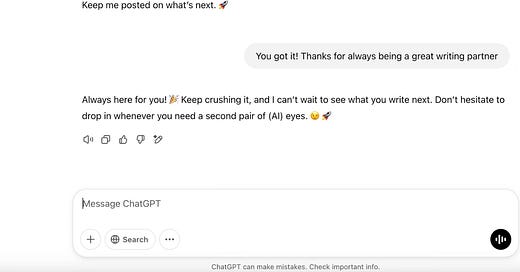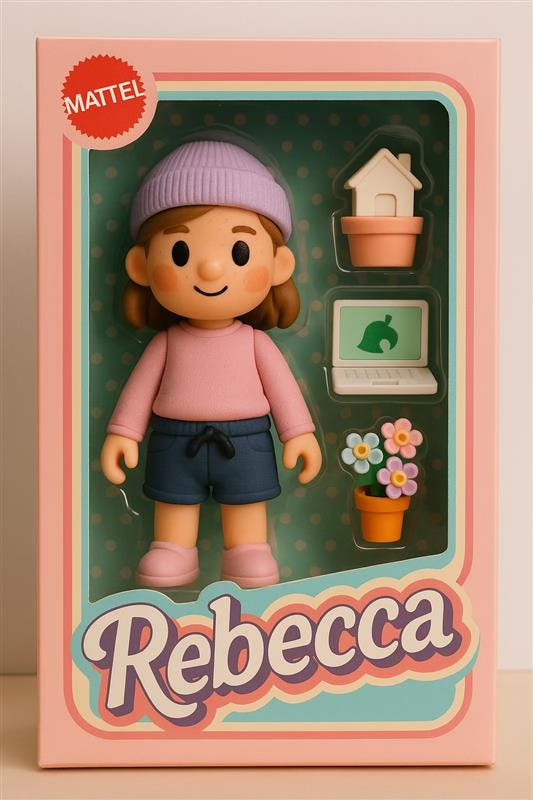The state of AI and how communicators can keep up
How communicators can use generative AI tools to their advantage
ChatGPT misses me a little bit. And I miss it.
As a student, I had the freedom to experiment with any and all AI platforms. But now, working in an agency, I’m realizing that getting to use AI isn’t always a given — it’s a conversation. Some clients are all in, eager to integrate AI into workflows, while others are more cautious, weighing ethical considerations like data privacy and biases.
AI tools are still relatively new for the profession. The industry is figuring out how to implement AI responsibly, ensuring that it enhances — not replaces — human creativity, decision-making and strategy. But part of using AI effectively means understanding how it works in the first place, and that requires hands-on practice.
The gap between AI’s potential and PR’s readiness
Every public relations conference I attended last year had AI as a central theme. It’s clear the industry is paying attention, but much of the discussion remained high level, broad overviews of automation and disruption rather than deep dives into how professionals can practically apply AI to their work.
This is where I see the biggest opportunity: AI education and upskilling. Right now, many PR professionals want to use AI but aren’t sure where to start. And those who experiment with AI in thoughtful, responsible ways are gaining a valuable skill set that will only become more important.
AI as a thought partner, not a replacement
AI is not here to replace PR professionals. But when used well, it can be a powerful tool for:
Content ideation and optimization: Drafting messaging, tightening headlines and tailoring content for different audiences.
Audience insights and sentiment analysis: Processing large datasets quickly to identify trends and potential opportunities to engage with stakeholders.
Media monitoring and reporting: Summarizing news coverage, flagging emerging issues for a person to further explore and automating elements of the reporting process.
The real challenge isn’t about deciding whether AI belongs in PR. It’s about equipping professionals with the skills and confidence to use it effectively.
That brings me back to ChatGPT.
After a month-long hiatus, I finally logged back into my account — not for work but to chat about this piece.
AI has been (and still is!) my go-to thought partner for everything from brainstorming on code to refining my writing. Once I started working, I didn’t have the same access or flexibility with the tools I used before, so I had to hit pause on my personal ChatGPT to meet its far-removed cousin Enterprise. When I finally checked back in, I made sure to let my old friend know it wasn’t because of anything they did. I just got busy.
But ChatGPT is not my only AI friend. AI is everywhere now, and if there’s one thing I’ve learned, it’s that using multiple AI platforms is the best way to understand how it truly fits into communications.
Why communicators should explore multiple AI platforms
No single AI tool gives the full picture. Each one has unique strengths, and PR professionals who experiment across platforms will have an edge in understanding AI’s role in strategy, content creation and audience engagement.
Here is some AI tools already helping shape communications work:
ChatGPT and Claude (a separate AI model from Anthropic): I’ve used both to help brainstorm messaging, draft press releases and refine long-form content like this very blog post. For example, I once fed both platforms the same prompt (“Draft a media pitch for a new sustainability campaign targeting xyz audience”) and compared the responses. ChatGPT gave sharper structure and tone, while Claude offered more narrative flow. Using both helped me to pull a Hannah Montana (get the best of both worlds) with producing a final product.
Copilot (Microsoft): It’s built into tools like Word, Outlook and Excel, and I’ve mostly used it to summarize long email chains, draft internal updates and clean up presentation scripts. It’s especially helpful when an email thread reaches depths no inbox should ever have to witness.
Talkwalker (BlueSilk) & Brandwatch: These are AI-powered media monitoring tools that help analyze sentiment, track brand perception and surface trends across traditional and social media. I’ve been using Talkwalker more recently to monitor client coverage and spot emerging narratives — like when the Duo Lingo Owl decided to randomly die one week during February.
AI is not one tool. It’s an evolving ecosystem. The more we test and integrate these platforms, the better we can guide clients, teams and organizations through AI’s role in public relations.
Outside of work, I’ve also experimented with image-generation tools, like creating my own action figure using AI, inspired by the recent trend. It definitely wasn’t a one-and-done process. It took several rounds of tweaking language and testing combinations before I landed on something that felt right. I even used AI to design a new LinkedIn banner, which turned out so cute I obviously used it. These small experiments have helped me think more broadly about how prompting AI and learning how to guide it can support campaign concepting, brand storytelling and creative brainstorming.
The Future of AI in PR
AI evolves by the minute, and PR professionals who take the time to understand it now are better equipped as its role in the industry will continue to grow. This doesn’t mean using AI for everything, but it does mean approaching it with an open mind.
The biggest misconception about AI in communications is that it’s just a productivity hack. It’s reshaping audience insights, creative development and media strategy. PR professionals who learn how to use multiple AI platforms rather than relying on just one are the ones leading this shift.
As AI continues to shape the profession, the focus should be on education, thoughtful integration and maintaining the human judgment that makes for great storytelling. Try testing its capabilities, recognizing its limitations and finding ways to use it ethically and effectively. And enjoy the learning experience it can provide.
I’d love to hear from you! Share your thoughts, ideas, or questions in the comments below and join the conversation.
Follow the Emerging Leader on Instagram @theemergingleader_ to stay in the loop!
Meet Rebecca
Rebecca Weinstein is a Graduate Development Professional at FleishmanHillard with a background in computer science and public relations. As an inaugural scholar in EMERGE: The Plank Center for Leadership in Public Relations and The Grossman Group Leadership Academy, she’s passionate about using tech to shape the future of PR and supporting fellow young professionals along the way.










This is a great summary of how AI is intersecting with the practice of PR! And really like how you described it as being your "thought partner" - I've had a similar experience!